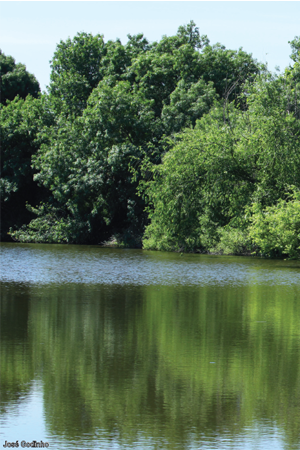
|
 |
The most important feature of watercourses in the Lower Inland Alentejo, is their intermittent regime, with a strong flow in winter and virtually no water in summer, during which they remain evident only as small ponds. A green serpentine formation amongst the yellow pseudo-steppes indicates the presence of riparian vegetation in the summer. The species thriving in these sites are adapted to these seasonal extremes. Some plant species, such as buttercups, are aquatic, whilst others, such as willows, rushes and oleanders, are more characteristic of wet margins. The riparian vegetation is home to a wide variety of passerine birds such as kingfishers and waders (e.g. common snipe) that occur in areas where the strength of the current is negligible. In the backwaters, in spring and at the end of the day, croaking frogs can be heard, mimicking a choir, as large numbers gather for mating and reproduction. In the deeper water it is possible to see otters, although droppings on rocks along the banks are usually the more obvious sign of their recent presence. The Mediterranean turtle favours sunbathing on the muddy shores, and some mammals, such as the Egyptian mongoose, come to drink water at the margins. In some places, especially in the warmer months, water that is retained in ponds reaches very high temperatures to which the native fishes are adapted.
|

|